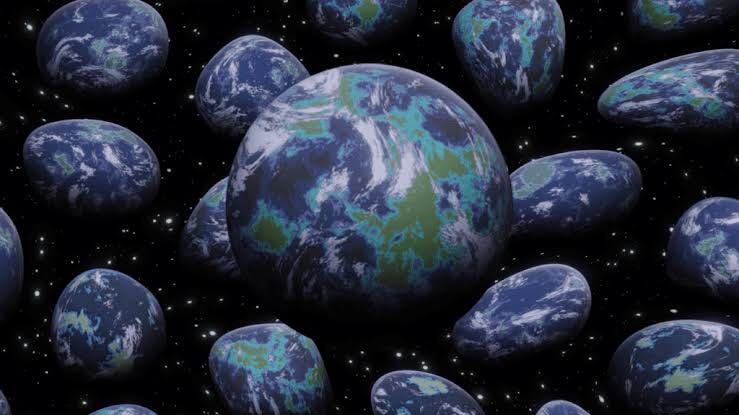Is there really only one universe?
Science fiction movies, and even scientific fact, suggest that alternate universes exist, where alternate realities are “staged” in response to every choice you make.
This concept is known as “parallel universes,” and the collection of parallel universes forms the theory of the “multiverse.” The idea has been popularized not only in the world of astronomy, but also in comic books, video games, TV series, and movies, and has been used in a variety of shows, from Star Trek to Digimon, and has even been popularized by the general public.
This time, we will introduce you to “Seven theories about the multiverse” that are full of such dreams.
What is the multiverse theory?
13.7 billion years ago, everything in our universe was a tiny singularity. According to the Big Bang theory, something triggered the universe to expand into a three-dimensional universe, but we don’t yet know what that trigger was.
As the immense energy used in this initial expansion cooled, it began to glow with light, and eventually tiny particles began to form, eventually merging into the larger matter we see today: galaxies, stars, and planets.
Does this mean just one universe was created? With current technology, we can only see the inside of our universe, because the universe is curved, so we can’t see out from inside the fishbowl.
However, there are at least five theories that explain why a multiverse is possible.
Evidence 1. Infinite Universe
We still don’t have a clear picture of what space-time looks like. The theory that space-time is ‘flat’ and goes on infinitely is pretty widely accepted.
But infinity means that there are many possible universes, but ultimately it means that the universe can “repeat” and “start over” itself, because the combinations of particles are “finite” and must start repeating at some point.
Evidence 2. Bubble Universe
In addition to the “infinite universes” mentioned in the previous section, a theory called “eternal inflation” proposed by cosmologist Alexander Bilenken of Tufts University suggests that it is possible that other universes may be created.
According to this theory, when we look at the universe as a whole, there are areas where expansion appears to have stopped and areas where it continues to expand, resulting in the concept of numerous distinct bubble universes.
What’s interesting about this theory is that since the universes are not linked, other universes could have different physical laws to ours.
Evidence 3. Parallel Universes
Next comes the important concept of parallel universes.
Returning to the idea of space-time being flat, the number of possible particle configurations in the multiverse is said to be limited to 10 to the power of 122 (10^10^122) possibilities.
So, with an infinite number of patches of the universe, the arrangements of particles within them must be repeated – infinitely many times.
This means that there are an infinite number of “parallel universes” – patches of universes just like ours, patches that differ by just one particle, patches that differ by just two particles, and even patches that are completely different from ours, all existing at the same time.
Famously, physicist Stephen Hawking’s last paper before he passed away also involved the multiverse. The paper was published in May 2018, a few months after he passed away. Regarding the theory, in an interview with The Washington Post, Hawking said, “We haven’t reduced ourselves to a single, unique universe. Our findings show a significant reduction in the multiverse, meaning the number of universes that may exist is much smaller.”
Evidence 4. Daughter Universe
Quantum mechanics, which deals with the microscopic world, suggests that multiple universes can arise in a way different from that shown above.
Quantum mechanics describes the world in terms of possibilities/probabilities rather than definitive outcomes.
And according to probability theory, every possible outcome is also possible in each alternate universe.
So in one universe you’re working in China, but in another universe maybe you’re on the road, or you’re flying into a different location, or you decide to stay there, and so on, branching off into different universes.
Evidence 5. The mathematical universe
There has been a long-running debate about whether mathematics is merely a useful tool for describing the universe, or whether it is a fundamental reality in itself.
If the latter is true, then we have an incomplete perception of the mathematical nature of the universe.
In that case, the particular mathematical structure that makes up our universe is probably no longer the only option; in fact, any and all possible mathematical structures could exist as their own universes.
“A mathematical universe is something that can be described in a way that is completely independent of human notions,” says MIT’s Max Tegmark, a proponent of the theory. “I feel like I brought the whole universe into being, and it would still exist without us.”
Arguments against parallel universes
Of course, not everyone agrees with the theory of parallel universes. In 2015, astrophysicist Ethan Siegel agreed that space-time could theoretically extend to infinity, but said there are some limitations.
The universe is under 14 billion years old, so we can say that it’s not infinite. This means there are limits to how particles can move and rearrange.
Also, the expansion that occurred at the beginning of the universe was exponential because the inherent energy of space itself is so great, but over time this inflation has significantly slowed down, and the particles of matter created in the Big Bang are not continuing to expand.
This means that the multiverse will have different inflation rates and different times it takes to inflate, making it less likely that the universe will be similar to our own.
Reality in which you have made choices that will make your dreams come true, because you are the ONLY ONE who can bring about those choices.
Forget the fundamental constants for a moment—there might still be an endless variety of ways particles and interactions can play out. Could the many-worlds theory really be how our universe works? the number of possible outcomes actually rises so quickly — much faster than a simple exponential function — that there can be no parallel worlds that are exactly just like ours unless inflation has occurred for a truly infinite period of time,” Siegel said.
But instead of seeing the lack of other universes as limiting, Siegel has a philosophy: how important it is to celebrate uniqueness.
He advises you to make choices that will benefit you and leave you with no regrets, because there is no other reality in which you have made choices that will make your dreams come true, because you are the ONLY ONE who can bring about those choices.

